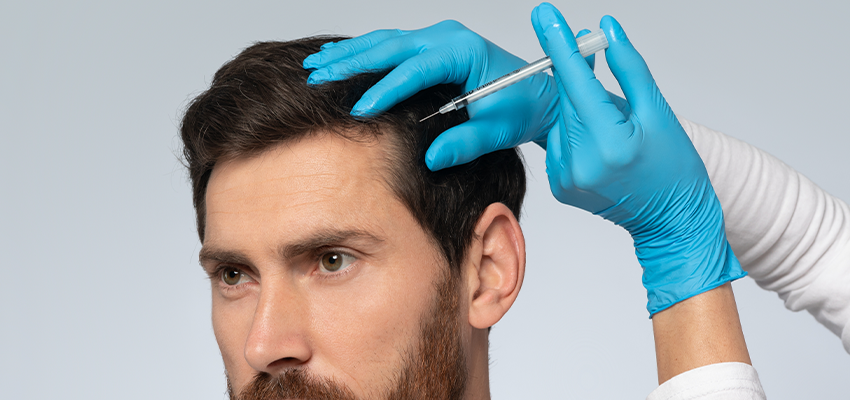PRP Treatment for Hair Loss and Thinning Hair
PRP therapy is an innovative, several-stage treatment that can also be used against hair loss, basically consisting of taking, processing, and injecting one's own blood.
PRP (Platelet-Rich Plasma) treatment is gained popularity as a non-surgical solution for hair loss and thinning hair. This innovative procedure utilizes the healing properties of the patient's own blood to stimulate hair growth and improve the overall condition of the scalp.
It has been proven by dozens of studies that PRP treatment, which is an area that is still being studied, is beneficial against hair loss.
Who Can Have PRP Treatment for Hair Loss?
PRP treatment is proper for people experiencing different forms of hair loss or thinning hair. The following individuals may benefit from PRP treatment.
- Androgenetic Alopecia: This is the most common cause of hair loss and is characterized by a gradual thinning of the hair. Both men and women with androgenetic alopecia can consider PRP treatment as a potential solution.
- Alopecia Areata : This is an autoimmune condition that causes patchy hair loss. PRP hair therapy can be beneficial in stimulating hair regrowth and improving the density of the affected areas.
- Thinning Hair : Individuals with general thinning hair, regardless of the underlying cause, can explore PRP treatment as a means to promote hair growth and increase hair thickness.
Candidates should consult with an experienced healthcare professional or a hair restoration specialist to determine whether PRP treatment is suitable for them.
PRP Treatment for Hair Loss: Procedure
A small sample of the patient's blood is collected, usually from the arm, similar to a regular blood test. The sample is then processed in a centrifuge machine to separate the platelet-rich plasma from the rest of the blood components.
The extracted blood sample is spun in the centrifuge to concentrate the platelet-rich plasma. This plasma contains a high concentration of growth factors and healing properties.
Before administering the PRP, topical anesthesia or numbing cream is applied to the scalp to ensure a comfortable treatment experience.
The PRP is either injected into the scalp using fine needles or applied topically and absorbed into the skin through micro-needling. The method used may vary based on the patient's needs and the specialist's expertise.
At the beginning of the treatment, it is usually performed once a month for 3-4 months, then this can be repeated every 3 or 6 months according to the needs of the patient. The number of sessions that the person should receive is informed by the specialist in the treatment plan.
PRP Treatment for Hair Loss: Advantages
PRP treatment for hair loss contains several advantages that make it an appealing option for candidates seeking hair restoration. There are some key benefits of PRP treatment below.
- PRP treatment is a non-surgical procedure, which means that it does not involve any incisions, stitches, or extensive downtime.
- PRP treatment utilizes the patient's own blood, specifically the platelet-rich plasma, which contains growth factors and healing properties.
- It is considered safe, with minimal risk of allergic reactions or complications.
- PRP treatment is versatile and can be customized to suit individual needs.
- PRP treatment stimulates the growth of natural hair, resulting in hair that looks and feels natural.
- The effects of PRP treatment can be long-lasting.
PRP Treatment for Hair Loss: Aftercare
Proper aftercare is important to maximize the benefits of PRP treatment for hair loss. There are some key aftercare guidelines to follow below.
It is recommended to avoid washing the hair for at least 2 days following the PRP treatment. This allows the practice to fully penetrate the scalp and promote hair growth.
Patients should use a gentle shampoo and conditioner that are suitable for their hair type. Avoiding using harsh chemicals or excessive heat styling is a must, as these can damage the hair and scalp.
Protecting the scalp from direct sunlight by wearing a hat or using sunscreen is also necessary. Sun exposure can be harmful to the scalp and may interfere with the healing process.
Depending on the person's needs and the healthcare professional's recommendation, multiple PRP treatment sessions may be required to achieve the desired results. It is important to follow the recommended treatment schedule for optimal outcomes.
Standing out with its experienced specialists, trained staff, and warm clinical environment, Health International follows the developments in the world and adds innovative treatments to its organization. Please contact us for detailed information.

